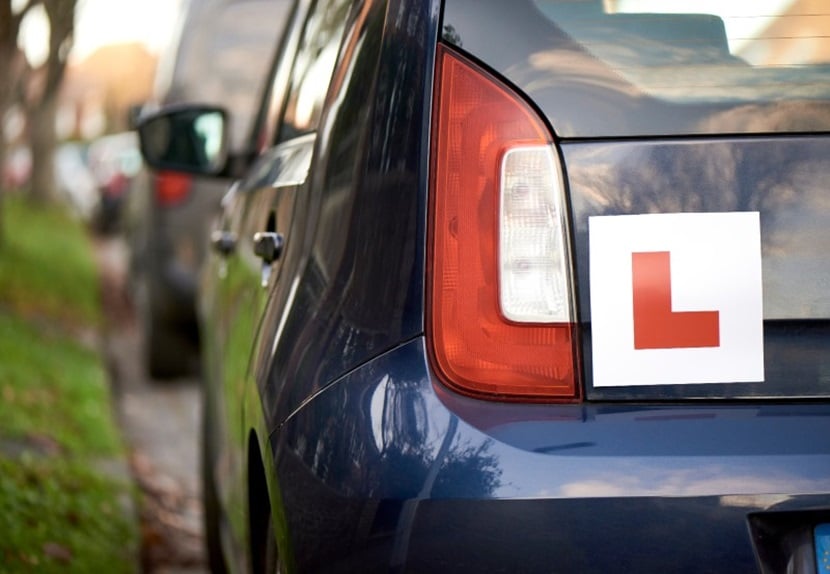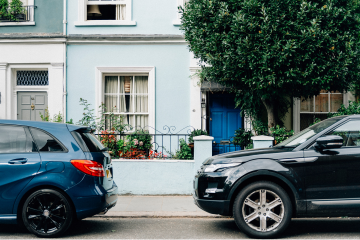You can teach a learner to drive if:
- You’re at least 21 years old.
- You've held a full driving licence for at least 3 years.
- You’re qualified to drive the same type of car as the learner.
- You meet the minimum eyesight standards.
- The learner is at least 17 years old and holds a provisional licence.
Remember, you can’t take payment for teaching a learner driver unless you’re a qualified driving instructor.

Do I need insurance to teach someone to drive?
Yes, both you and the learner must have insurance to drive the car.
There are a few different ways to make sure both you and the learner driver are insured:
- Learners can take out their own temporary learner driver insurance. This shouldn't impact your existing car insurance policy.
- Learners using their own car should be insured as the main driver, and you could be added as a named driver. UK provisional licence car insurance usually costs around £776* per year on average.
Remember, if you're supervising a learner, you should tell your insurer.
Teaching a learner how to drive
It might've been a while since you passed your test. Both the practical and the theory test have evolved quite a bit over the years.
Follow these steps and you should have a better chance of making a success of teaching someone to drive:
-
Make sure your car is ready for the road
-
Read about the driving test
-
Get rid of bad driving habits
-
Plan your route
-
Use your time to practice skills from the learner driver’s lessons
-
Stay calm
-
Put learner driver through a mock test
1 - Make sure your car is ready for the road
If you're teaching a learner in your car, it must:
- Be displaying L plates on front and back.
- Have valid tax.
- Be roadworthy (check lights and tyres).
- Have an MOT certificate.
If your car doesn't met these requirements the learner driver could end up with penalty points on their licence.
2 - Read about the driving test
If you're going to teach someone how to drive, make sure you know what the driving test entails.
Depending on how long you’ve had your licence, the driving test might've changed since you passed. The current driving test includes:
- Hazard perception
- Show me, tell me
- Independent driving
It’s worth studying the manoeuvres that learners need to know for their practical test, such as turning in the road and bay parking.
The same applies to the theory side of learning to drive. If you're a little rusty on road sign meanings or your stopping distances, read up on the Highway Code.
3 - Don’t pass on bad driving habits
If you’ve been driving for some years, you might've picked up some bad driving habits along the way.
Some bad driving habits are:
- Crossing your hands over the wheel.
- Slipping from the 10 and 2 o'clock positions.
- Not using the handbrake when stopped.
You don’t want to pass any of these on to a learner driver or they'll risk failing their test. So, it’s best to try and cut out your bad habits now.
4 - Plan your route
You should plan your route when supervising a learner driver. By planning, you can take them along roads that match their driving ability. But also give them more variety and challenges as their driving experience increases.
In the first lessons with your learner driver, you should be taking them down quieter 30-40 mph roads.
Once they’ve built up their experience and confidence, you can start practicing in town centres and on roads or dual carriage ways.
It’s also always best to find quieter spots if you’re practicing manoeuvres, like 3-point turns or hill starts.
As their driving skills improve, you should try to get some practice driving at night as well as driving in wet weather.
It’s illegal for learner drivers to go on motorways unless they’re with a qualified driving instructor in a car with dual controls.
You can use this form to keep a record of private driving practice, including the type of roads/conditions.
5 - Use your time to practice skills from the learner driver’s lessons
Your first practice session with your learner should be after they've had a few lessons with their driving instructor.
Ask what specific skills they'd like to cover with you and talk about what they've been doing with their instructor.
This helps reinforce the good practice and tips they’ve learnt from a driving expert.
6 - Stay calm
It's crucial to keep calm in the car and not let things get heated. If either of you start to lose your cool, take a 5-minute break and then try again with a clean slate.
Patience is key to supervising a learner driver. If things aren’t working, it may be best to admit defeat. Sometimes a teacher-pupil relationship doesn't work.
If this is the case, it’s better that the learner finds someone else to practice with.
7 - Put learner driver through a mock test
Doing a mock test helps prepare learner drivers for the real thing. You can go over elements that they might need to work on and combat their nerves.
If you do a mock, it should take 40 minutes and include all the key things that learner drivers face on the real test.
Make note of any obvious mistakes and bad habits, especially anything that's unsafe. You can review these together at the end of the mock. These are the things a learner would want to avoid repeating so they have a better chance of passing their test.
The mock should include:
- Eyesight test – they’ll need to read a number plate that’s 20 metres away.
- Driving skill – once you’ve given them instructions, try to assess their driving safety. Make note on how they use the mirrors.
- Independent driving – allow 20 minutes for independent driving, with the learner taking directions from a sat nav.
- Pull over, pull out – they have to pull over and then pull out again, using mirrors and indicating.
- Reversing – test at least 1 of the manoeuvres involving reversing. For example, bay parking or parallel parking.
Compare learner driver insurance
*Confused.com data. July 2022 - June 2023. Comprehensive policies only.







